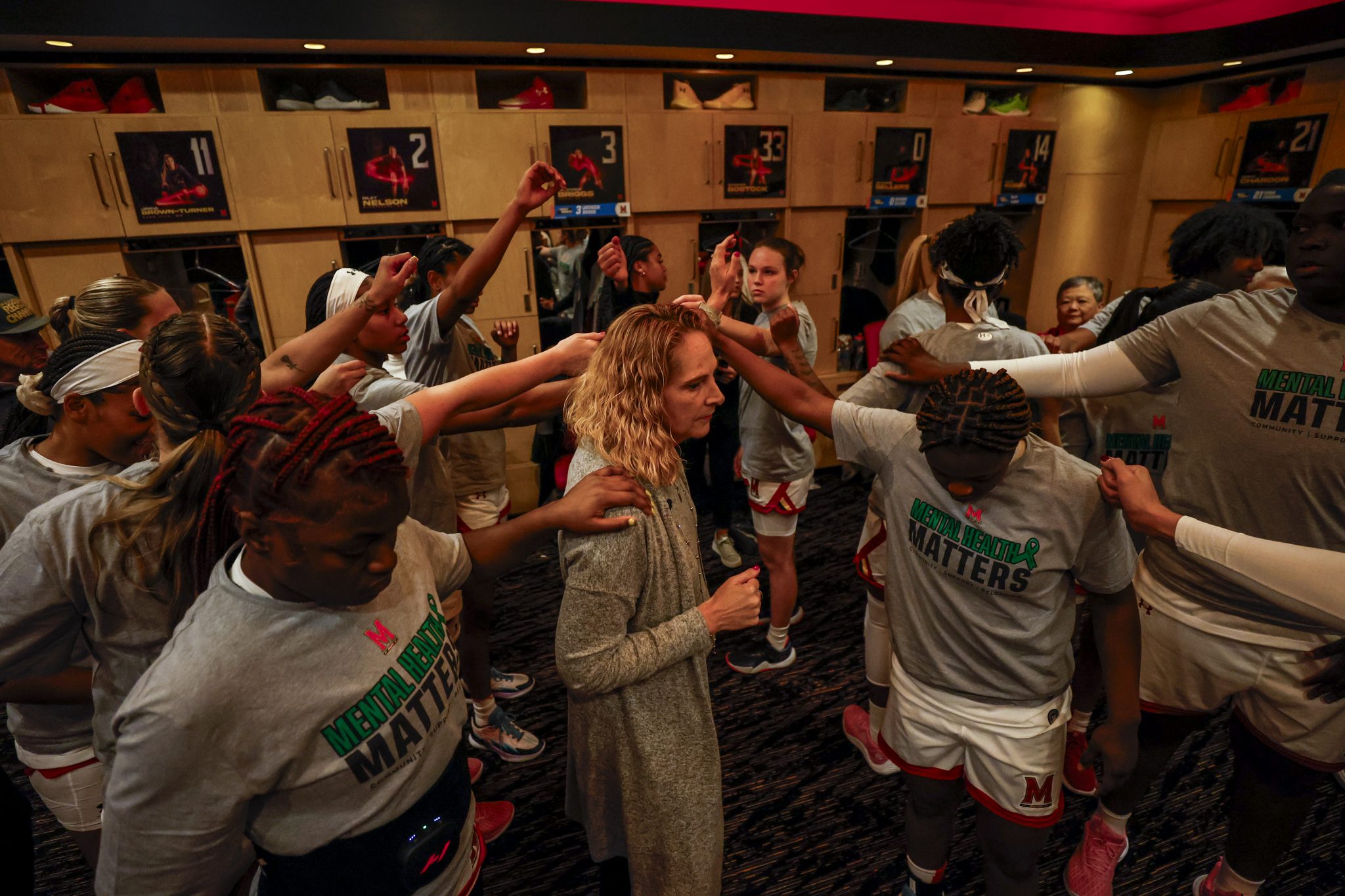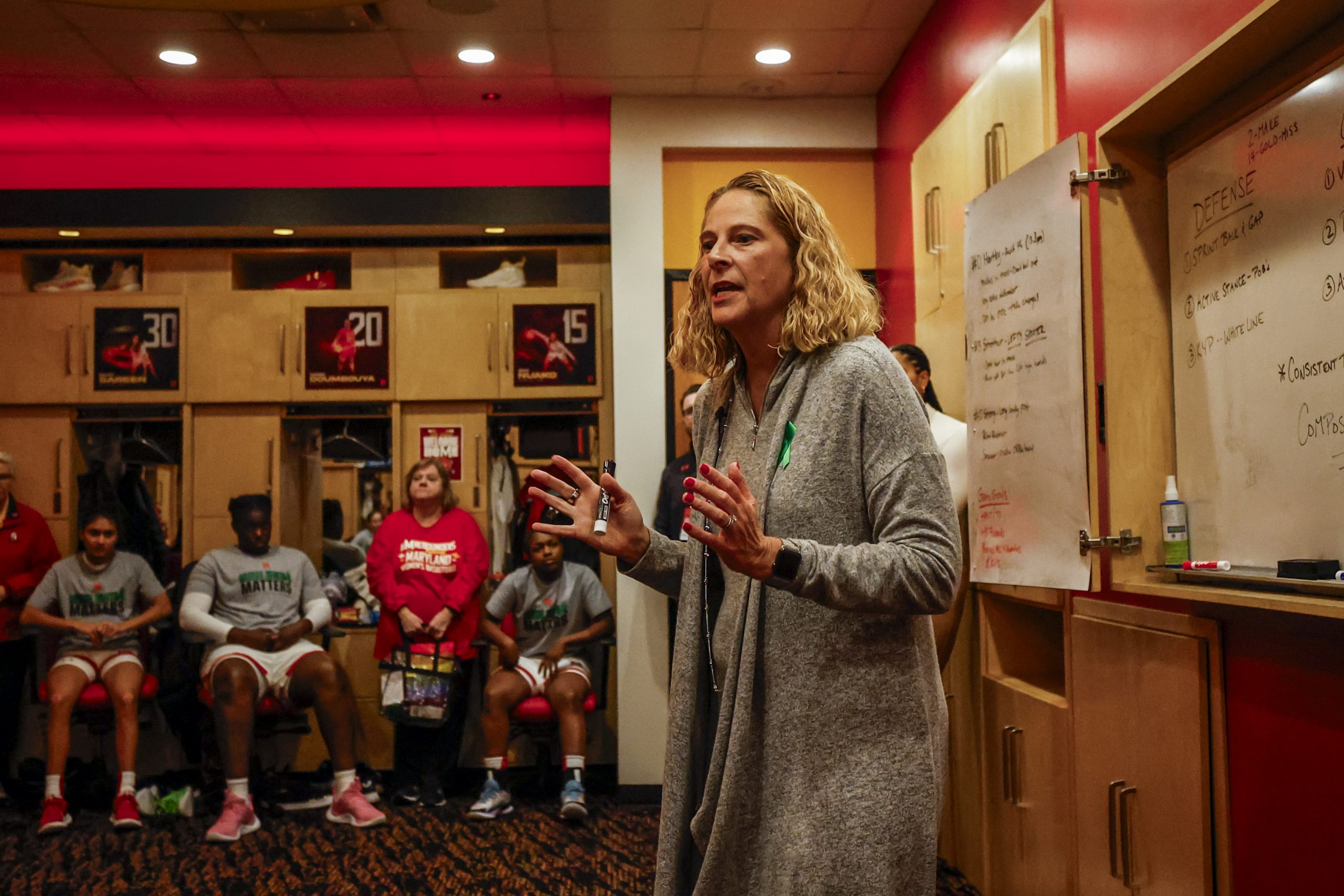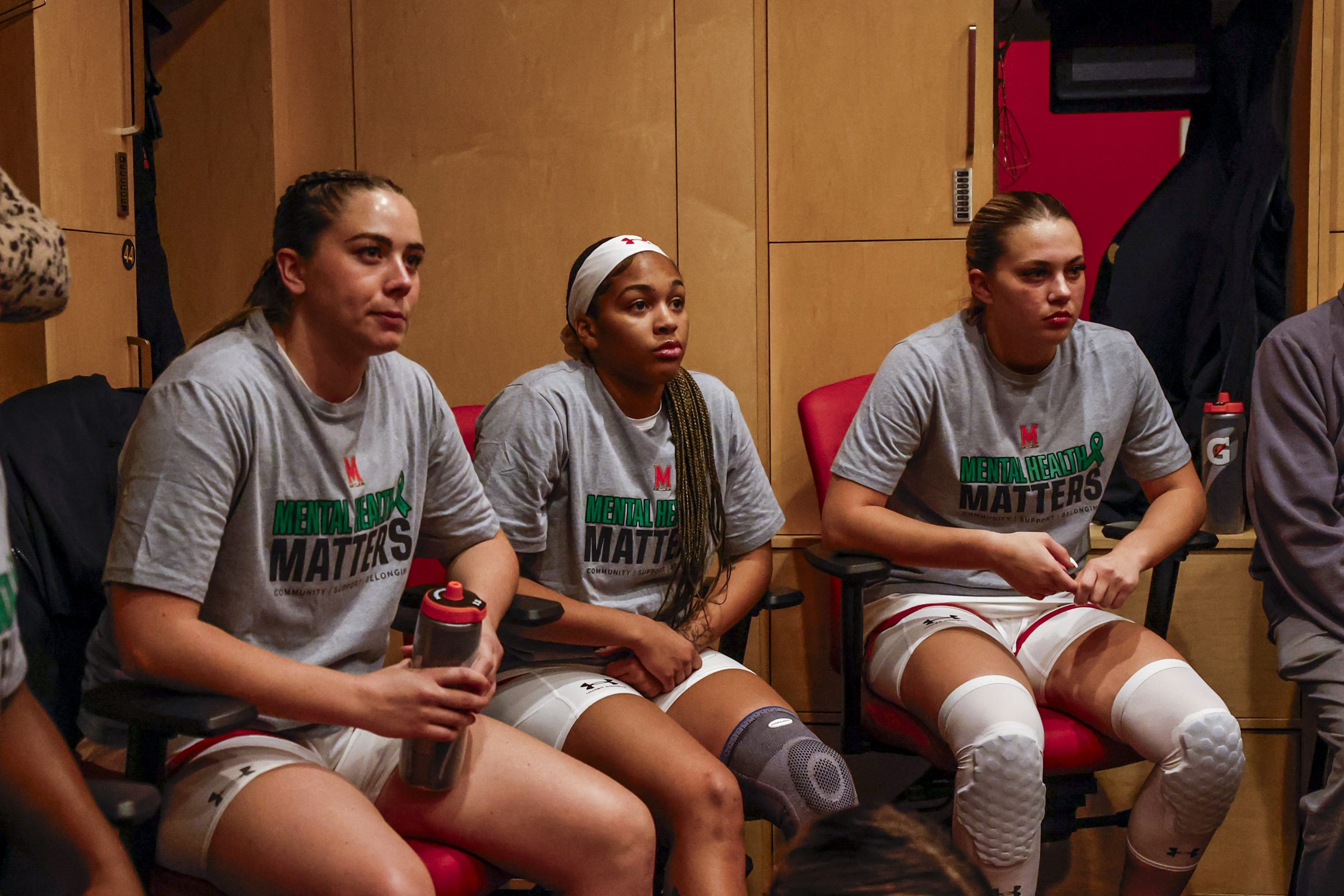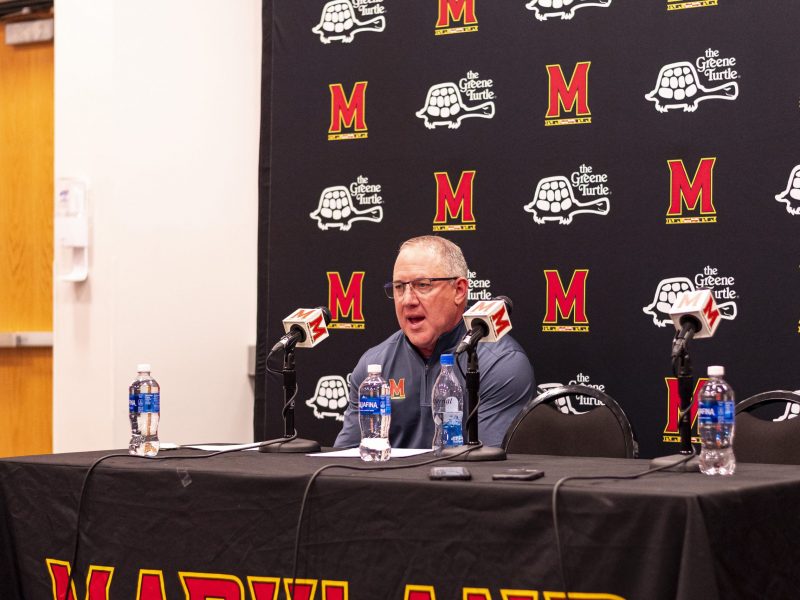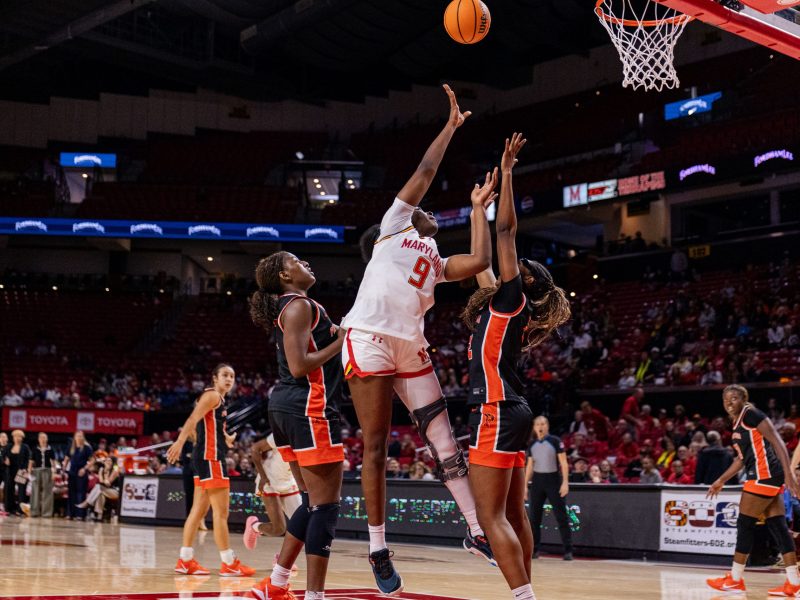Faith Masonius studied in her apartment alongside Shyanne Sellers, Hawa Doumbouya and Riley Nelson as Maryland men’s basketball’s game against Indiana blared in the background. When the game paused for halftime, the grad student noticed a contradiction.
“Why does halftime always feel so short when it’s our game, but then when we’re watching someone else, it feels so long?” Masonius asked.
Her comments point to the speed of halftime, a frenetic 15-minute race to evaluate, make necessary adjustments and refuel. It’s a fast-paced process even in blowouts like Maryland’s 114-44 domination of Niagara on Nov. 29.
The Diamondback sat in on the Terps’ pregame, halftime and postgame meetings during the win, gaining insight into what happens behind the well-protected door of a collegiate locker room. Atop the entryway sits a red electric clock that ticks down and directs every player, coach and staffer’s action.
The clock started at 15 minutes as Terp players filed one-by-one into the locker room. They sat in a U-shape. Coach Brenda Frese and her staff only enter the locker room after five minutes. By then, the players have already analyzed the first half.
The Terps led 57-17 against the Purple Eagles at halftime on Nov. 29. The team, while happy with the result, still found room for improvement. Niagara grabbed eight offensive rebounds despite a significant size disadvantage and forced eight Maryland turnovers.
Senior Brinae Alexander, who would finish the game with a career-high 29 points, stood at the whiteboard in front of the team and asked players to rate themselves out of 10 on a three-scale system measuring energy, effort and execution.
Graduate student Lavender Briggs, who did not play due to injury, chimed in first about the team’s poor rebounding.
“You’re bigger than them, but you’re not like actually driving back,” Briggs said. “When we play other teams…”
Jakia Brown-Turner interjected, saying Niagara had “way too many” offensive rebounds.
[Maryland women’s basketball found Brinae Alexander against Niagara, and she delivered]
The conversation’s negativity reflected the program’s exacting standards. The Terps knew they could beat Niagara due to a talent imbalance but had greater aspirations.
The players gave themselves an 8.5 for energy, an eight for effort and a nine for execution.
Nearly every player joined the discussion at some point with constructive criticism. Veterans like Sellers and Masonius spoke most often, while newer players such as Brown-Turner and Nelson were quieter.
During it all, players munched on a wide variety of snacks. Doumbouya chose Cheez-It crackers, while Bri McDaniel enjoyed applesauce. Everyone hydrated with water or Gatorade.
Frese and her assistants always start halftime just outside the locker room, in an area with plush couches and a fridge. The coaching staff collaborates on the second-half plan, each providing their opinion.
When they enter, assistant coach Jessica Imhof writes down key first-half stats on the whiteboard and players quiet down. They know who’s speaking next — the Terps’ message comes from one voice: Frese.
The other assistants filtered through the room, standing between lockers. Everyone’s eyes locked on Frese. The coach dissected the first half on the whiteboard, frantically drawing plays to show her team their mistakes.
“We’ve got to get better and fine tune it,” Frese said. “I’m not thinking just about Niagara, it’s the games that we have out ahead.”
She talked for nearly four minutes without an interruption. The coach outlined her team’s performance without cursing or berating players. Frese, in her 21st year at Maryland, has always understood what her team needs to hear and varies her approach accordingly.
[Maryland women’s basketball breezes past Niagara, 114-44, for third consecutive win]
“I feel like fans think that we’re in there getting cursed out if we’re playing bad, and sometimes that is the case,” Masonius said. “As a team, when we have our time together, it’s more like ‘what can we fix?’ or like ‘what are we doing good?’”
With about five minutes left before the teams resumed play, Maryland set its defensive goal for the second half. The Terps often do so during blowouts to maintain their intensity.
Frese asked what they should shoot for against Niagara.
“I think we should just go out and play strong defense,” Sellers responded, drawing laughs from the room. “In the three years I’ve been here, everytime we set a goal we never hit it.”
Imhof agreed, to an extent.
“Just play hard, but [give up] under 45 [points],” she joked.
The team settled on keeping the Purple Eagles under “40-ish” points. After Masonius led Maryland’s huddle, the players shuffled out of the locker room for a dominant second half.
Alexander rode her hot shooting to a career night and the squad narrowly hit Imhof’s goal, only allowing 44 points. The win marked a much-needed respite from a treacherous nonconference schedule.
Inside the celebratory locker room, Alexander’s teammates sprayed her with water for her career day. A team spokesperson read out notable stats. Then came the players’ favorite part of the post-win celebration.
For a program like Maryland that regularly finishes with twice as many wins than losses, winning can become mundane. Frese tries to combat that by handing out postgame awards, an idea she got from Paul VI boys’ basketball coach Glen Farello.
The coach gave a Windex bottle to Alexander and freshman Emily Fisher, who each had a team-high seven rebounds and “cleaned the glass.” She gave a plastic hand to Sellers, who led the Terps with a career-high 11 assists. She finished by presenting a plastic yellow construction hat to Alexander, the player with the best overall performance.
Most halftimes won’t be as calm as the Terps head into tougher matchups. The specifics will change, but each halftime process will work to maximize Maryland’s chances of winning.
The brief pause may seem calm or even boring to fans. But those in the locker room know its value.
“It probably is long for those in the stands,” Frese laughed. “For us it’s not long enough.”
